Death Cart
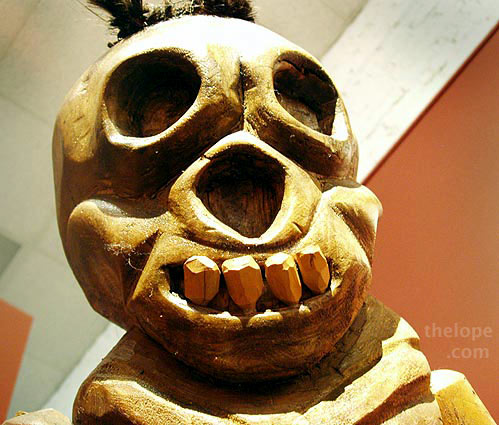
Yeah, that's a nice transition - from pretty Easter eggs in the last post to the head of death herself.
"Herself" you ask?
Yes, Death is a woman.
Meet Doña Sebastiana, the image of death to the Penitente Brotherhood, a lay religious society prominent in northern New Mexico and southern Colorado during the 19th century.
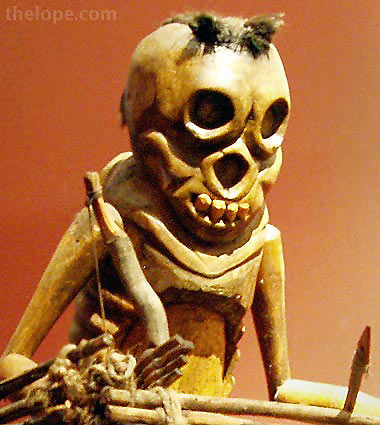
Members of the Penitente Brotherhood, or Hermandad de Nuestro Padres Jesus Nazareno, would do penance during holy week by placing an image of death in a cart filled with stones and pulling it in a reenactment of Christ's suffering on the procession to Calvary.
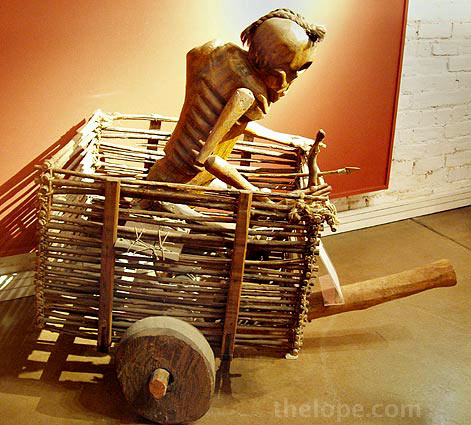
By the way "holy week' refers to the week before Easter in the Catholic religion; I had to look it up, myself.
The head of Doña Sebastiana often had real human hair, contributed by a female member of a Penitente's family.
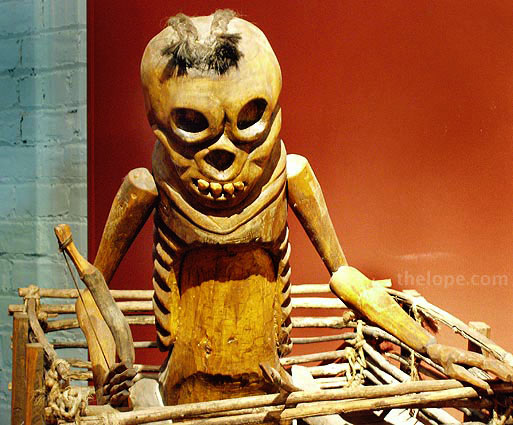
That the skeleton in the cart is often identified as Doña Sebastiana may be a reference to St. Sebastian who was martyred by being shot with arrows. The effigy is often seen carrying a bow and arrow, as this one is. It has also been suggested that the bow and arrow derive from the Spanish colonists' fear of Indian attacks.
It may also be that she simply carries the tools of death; this one has a spear.

Aside from the torturous task of pulling Doña Sebastiana and her rocks, the Brotherhood also practiced self-flagellation and other forms of ritual self-torture. Those extremes being noted, they also served the function of a social and financial safety net to many communities, although their ritual practices alienated them from the mainstream Catholic church. You can read more about the shadowy (and therefore, very interesting) Penitente Brotherhood here, here, and read an account from a 19th century photographer, here. More info on Doña Sebastiana can be had here.
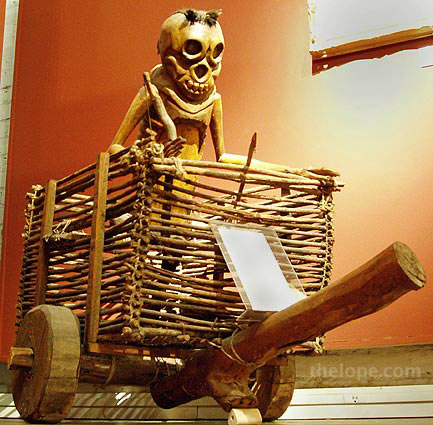
Where do you find a Doña Sebastiana today?
We found this one among the permanent exhibits of the Hutchinson Art Center in Hutchinson, KS.
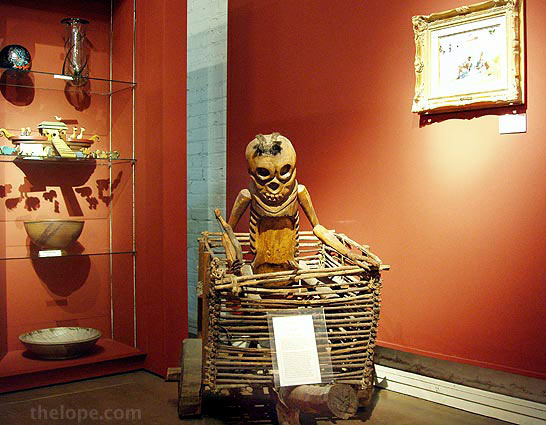
She and her cart are the work of Tesuque, New Mexico artist Ben Ortega, who died in 1998.
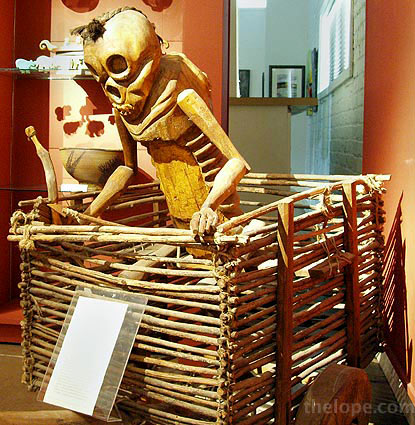
Ortega passed his carving skills along to his five sons an five daughters, many of whom are active today. He was renowned for his religious carvings and his work can be seen in the Smithsonian Institution in Washington, DC and the U.S. Embassy in Paris.
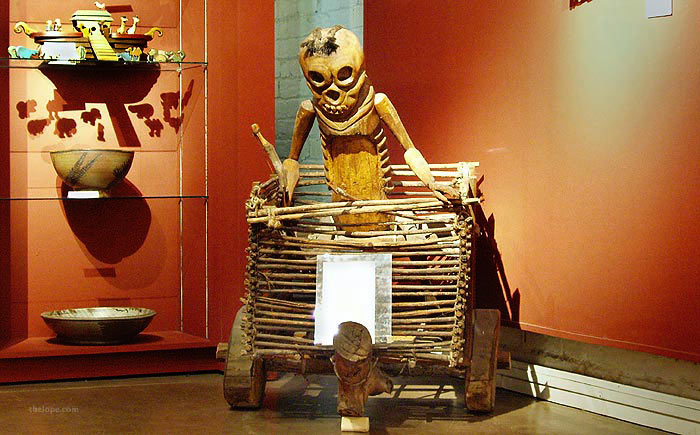
Aside from the cool death cart, the Hutchinson Art Center has works from local and regional artists including Thomas Hart Benton and Birger Sandzen. They also have a work by Georges Roualt, a French
Expressionist and contemporary of Matisse. I had just happened in there while running an errand; one never knows what one will run across in one's day.
Two photos added April 5, 2009 (shot October 10, 2008):
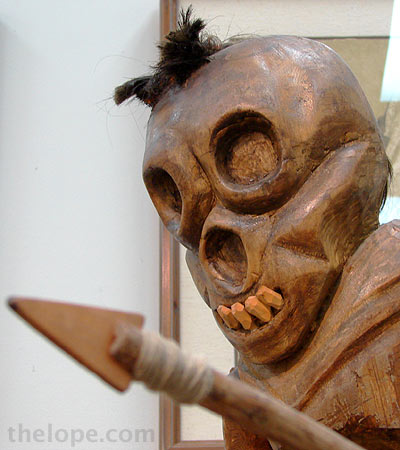
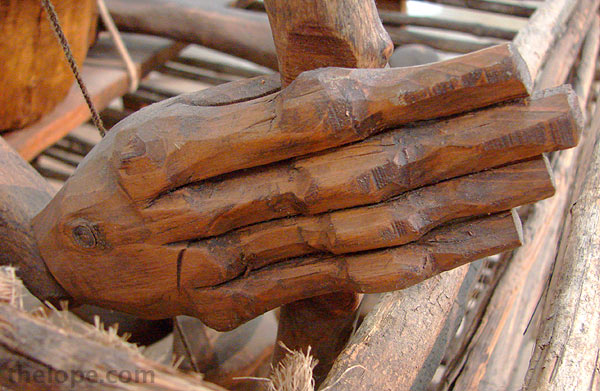

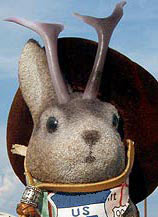
0 Comments:
Post a Comment
<< Home